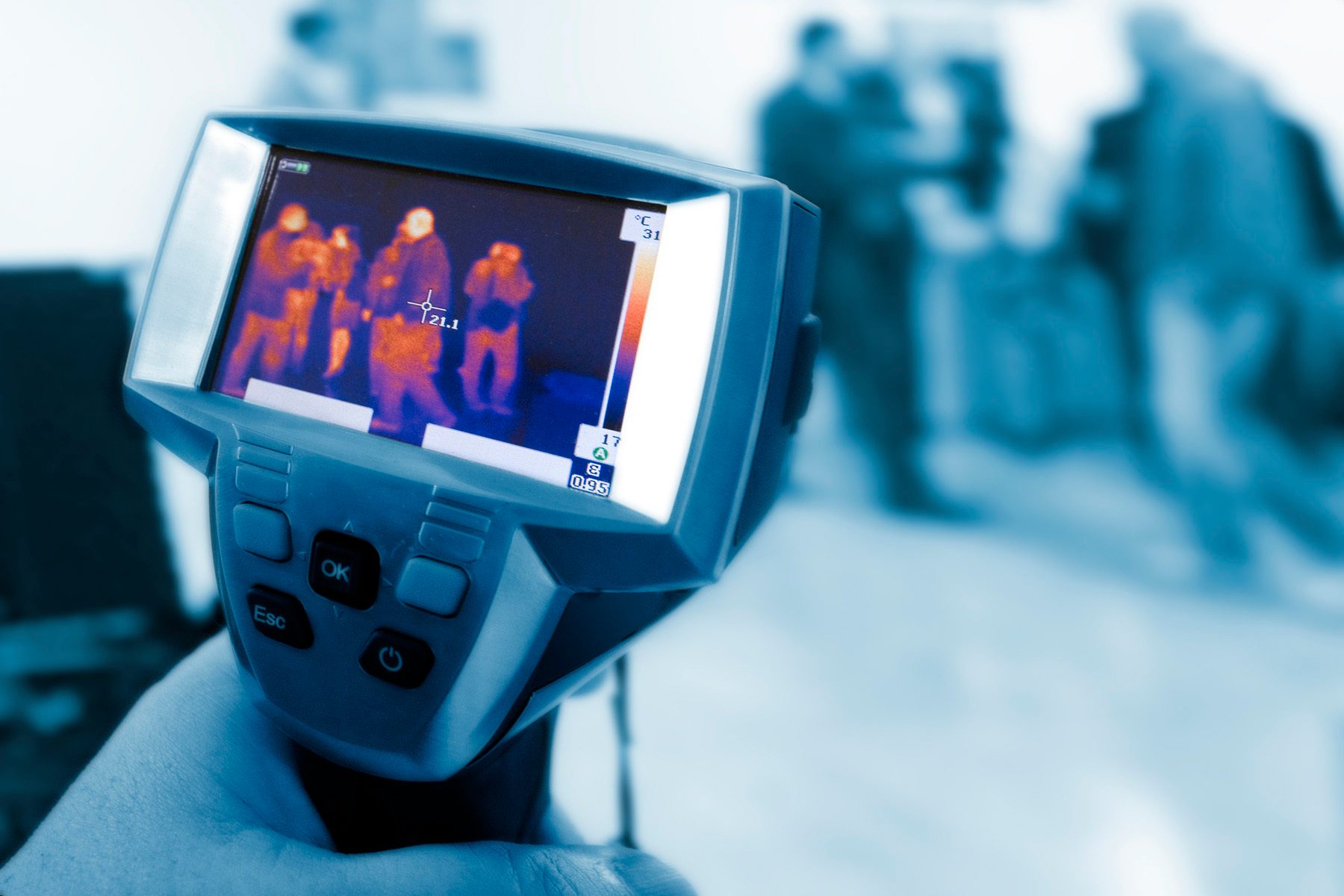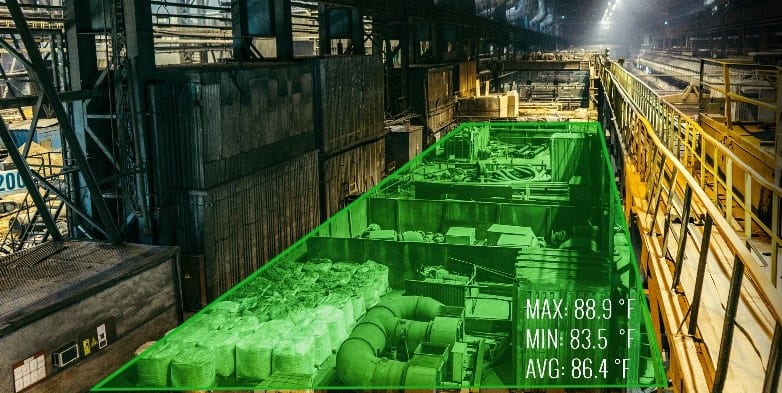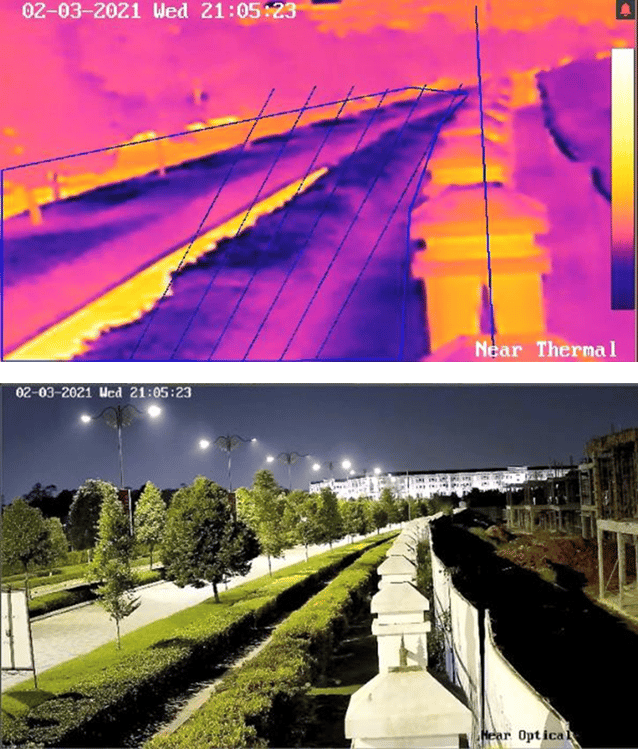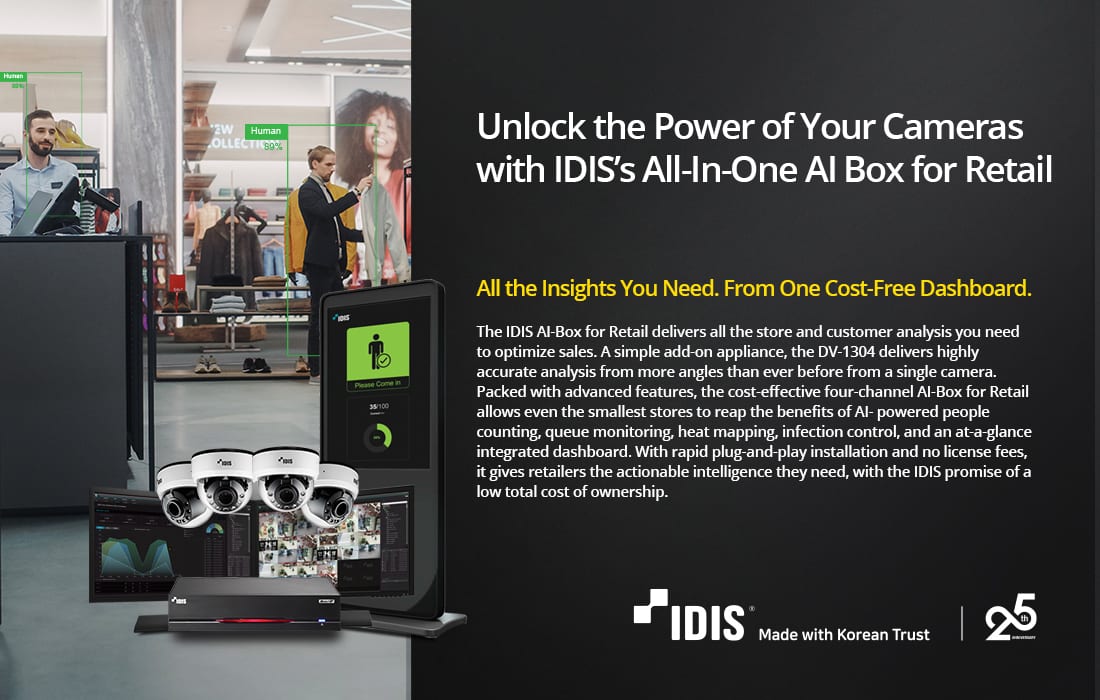// Video Solutions
Keeping Current With Thermal Imaging Advances

Thermal Imaging Advances
Keeping Current With
Once priced out of the reach of small and medium-sized businesses, thermal imaging today is affordable across a diverse range of settings where life safety demands monitoring and notification.
seraficus/E+ via Getty Images
The COVID-19 pandemic thrust thermal imaging to the forefront of technology applications used to stem the spread of the disease, with mixed results. Industry experts explain how to take advantage of this heightened awareness and capitalize on new opportunities moving forward.
By Anna Boudinot, SDM Contributing Writer
The early days of the coronavirus pandemic saw accelerated adoption of solutions that already existed, from video calls to food delivery apps to pajama pants. Thermal technology used in video surveillance applications was also suddenly in high demand, as it was used by many businesses to help detect elevated body temperature of employees and customers.
Increased installation of thermal solutions for this purpose boosted overall comfort with and awareness of thermal, with users realizing the benefits of thermal for both security and non-security applications. Two years after the pandemic-driven thermal boom, the technology is more affordable and more advanced than before — giving integrators more selling opportunities for thermal cameras.
Lower Costs
Once strictly a niche product, more installing security contractors include thermal in their product offerings than ever before. “[Recent] expanded use of thermal solutions has created new market awareness for dealers and systems integrators,” explains Trevor Sun, product manager of Thermal Lines at Hikvision USA, City of Industry, Calif. “They now better understand the value and the growth potential that thermal camera technology represents to their businesses, and therefore, they’re more likely to offer and deploy these solutions.”
Decreasing costs are another driver of more security operators making use of thermal, says Jennifer Hackenburg, product marketing director at Dahua Technology USA, Irvine, Calf. “The cost for thermal surveillance cameras has come down significantly compared to when they were high-priced, specialty devices for military use in the 1960s,” she continues. “As thermal demand has continued to grow, manufacturers have started to introduce entry-level thermal cameras at a lower price point.”
The green area indicates the customized measurement zone and the temperature thresholds are listed. Once a threshold is exceeded, the user will be notified so they can quickly respond before a fire breaks out and address the issue.
IMAGE COURTESY OF HIKVISION

Charlie Erickson, chief technology officer at 3xLOGIC, Fishers, Ind., talks about the continuance of this trend. “Thermal security manufacturers have recognized the need for affordable, mid-market solutions that tailor to small- and medium-sized businesses. Thermal core technology has evolved, producing increased resolution while realizing these affordable options.”
With the pandemic giving thermal widespread attention, there has been heightened demand for new security use cases, Hackenburg adds. “We have been seeing the expense of thermal cameras being shared among departments as the market is becoming more creative in new ways to use the technology. This extends beyond security. For example, a thermal camera being used for security purposes can also provide a secondary, non-security benefit such as monitoring the level of water in a water tank.”
Thermal Do’s & Don’ts
In 2020, countless end users invested in thermal technology in an attempt to detect elevated body temperature. Was that a smart move? Systems integrator Northland Control published a white paper — “Implementing Thermal Imaging Technology: 3 Things to Consider” — that offers insights to answering this question, along with providing other key insights. Ahead, Danny Chung, global director of consulting and design, Northland Controls, Cary, N.C., shares guidance on how to best implement thermal technology.
DO read the fine print if using thermal to measure body temperature. The FDA has always recommended that elevated human temperatures must be confirmed by a secondary source. “We don’t feel thermal is a viable solution to detect COVID in general,” Chung adds. “There are nuances in getting an accurate reading [for human temperatures] even with the best thermal cameras out there.” It’s also possible to be contagious with COVID-19 without having a fever, as noted by the CDC.
DON’T underestimate privacy challenges of using thermal cameras to collect employee data. The Health Insurance Portability and Accountability Act (HIPAA) includes provisions that require protection of information related to any individual’s health status. Data collected by thermal cameras can result in a HIPAA violation if it’s not protected. “If you’re picking up sensitive information about people or groups of people it can be misconstrued,” Chung warns. “Why even put yourself at risk for potential legal repercussions?”
DO deploy thermal in applications where it has proven to be successful. “Thermal works best in controlled environments without much temperature variance. This lets the camera more accurately detect variance in heat,” Chung says. Examples he gives include manufacturing facilities, where cameras can detect elevated temperatures in equipment that is overheating, and critical infrastructure applications that need to detect people and animals in very dark or remote places. “Thermal protection helps you understand when there are people around, especially where typical IR cameras cannot reach,” Chung says.
DON’T install thermal cameras without doing research on manufacturers. “A lot of thermal solutions popped up in response to COVID, and dealers should make sure they are aware of the manufacturers’ level of research and development in this technology,” Chung advises . “Manufacturers should be very upfront about the use cases of thermal and the pitfalls of how inaccurate it can be for temperature checks. Look for manufacturers who understand and communicate the limitations of what the technology is for.”
//
Higher Resolutions
Increased adoption of thermal technology also led to technological innovations in thermal imaging, including video content analytics, hybrid solutions and advanced sensors.
“Much like optical sensors, thermal sensors are now offering higher resolutions and more sensitivity,” reports Chris Johnson, regional marketing manager, video systems, Bosch Security and Safety Systems, Fairport, N.Y. “Pixel pitch, the distance between the centers of two adjacent pixels — measured in microns — is getting smaller. The smaller the pixel pitch, the greater the image detail. Most current thermal sensors [microbolometers] have a pixel pitch of 17um. These will be replaced by newer sensors with 12um pixel pitches.”
The cost for thermal surveillance cameras has come down significantly compared to when they were high-priced, specialty devices for military use in the 1960s.
— Jennifer Hackenburg, Dahua Technology
Sensitivity is also improving, Johnson continues. The sensitivity of a thermal sensor is determined by how well it can distinguish between very small differences in thermal radiation in an image. This is known as Noise Equivalent Temperature Difference (NETD) or thermal contrast, which can be measured in millikelvin (mK.)
“The lower the mK, the more sensitive the thermal sensor is and the better it is at producing high-contrast images. We are seeing NETD numbers declining from 70mK down to the 30mK range,” Johnson adds.
Manufacturers have also developed hybrid solutions for thermal to make security systems more efficient. “Nowadays, thermal cameras feature a dual sensor so the customer can see video from both a visible-light camera and a thermal camera without having to install separate devices,” Hackenburg explains. This means customers can maximize their security budgets by installing fewer cameras, while also providing more impactful video data.
Erickson speaks to additional benefits that hybrid provides. “Hybrid is an affordable solution that has the benefit of both technologies, particularly if the output video is fused. This enables the alarm operator to make a more informed decision.”
Sun reports the algorithms that drive video analytics continue to be optimized for thermal. “Thermal [analytics] can easily identify a target and classify it as human, vehicle or animal, based on the heat signal from each pixel,” he says. “Plus, thermal camera images are reliable in all-weather conditions, delivering consistent operation despite rain, dust or fog. Even complete darkness doesn’t stop thermal imaging from capturing more detail than optical lenses.”
Thermal imaging of a property perimeter detects the heat emitted by objects and people, enabling a more distinct view of scenes even with fog, dust or smoke. The depiction of the same scene shows the identical perimeter image from the optical lens view of a camera outfitted with thermal and optical modules in one unit.
IMAGES COURTESY OF HIKVISION

Advanced technology, greater cost efficiency and multiple applications are today’s selling points for thermal, giving dealers and integrators more reasons to introduce thermal to their customers or expand upon existing thermal deployments. Just like Zoom calls, thermal is here to stay. SDM

